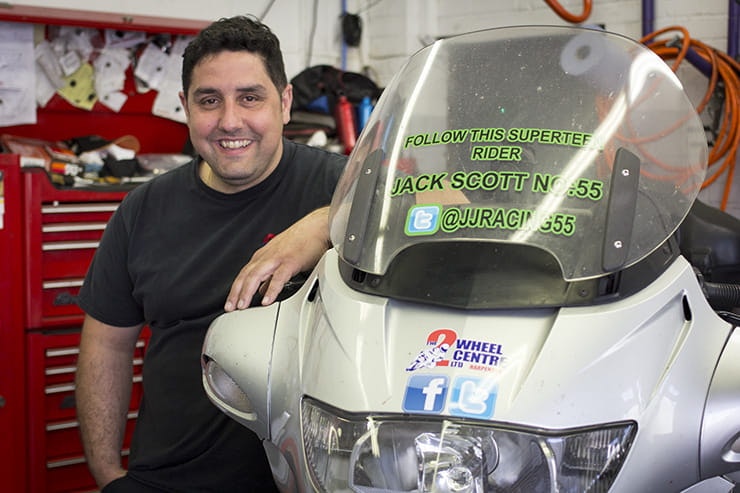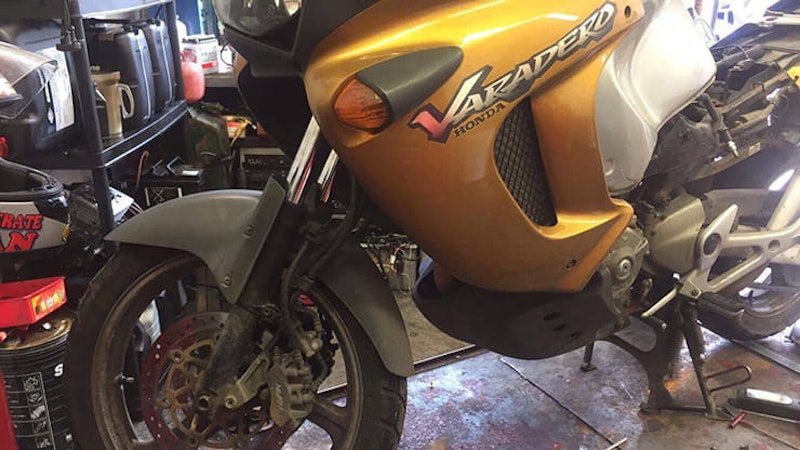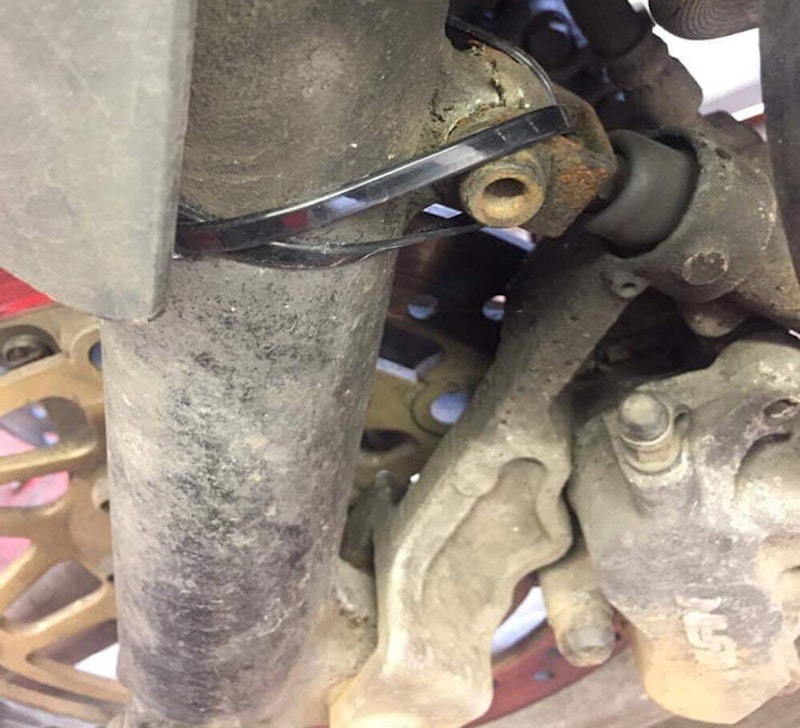Bike Maintenance: Motorcycle brake safety
By John Milbank
Consumer Editor of Bennetts BikeSocial
27.06.2017
Nick Nomikos is the Sales and Service manager of The Two Wheel Centre in Harpenden. An MoT tester since 2002, he’s worked at the family-owned shop since it opened in 1991; “If drawing attention to the importance of basic bike maintenance encourages more people to keep an eye on their bikes, then we’ve won!”
What’s going on here? This Honda XL1000V Varadero came into the workshop because it was misfiring. The problem there was the spark plug on the rear cylinder – a lack of maintenance meant it had broken down and failed. That’s why they need to be changed on time.
On closer inspection of the bike though, we found the caliper mounting point was held to the fork leg with a nylon tie.
Why does it matter? The Varadero has linked brakes, so the cylinder is compressed as the caliper bites the disc, which then applies pressure to the rear brake. This bike was in for a service, but it’d fail in an MoT on the basis that it’s been modified, and isn’t to the manufacturer’s original strength. The crazy thing is that – if it’s not moving around, and it’s in place – it could, theoretically, be passed!
When the customer was alerted to it, he said he had the replacement fork leg, but hadn’t got round to fitting it yet. He could have done nothing, and he figured that because the caliper is being forced onto the fork leg by the brakes, it’d be fine. But that’s a structural point – if it’s corroded and rotten there, how far does the rot go? How does he know that when he goes over a speed bump, it won’t snap off altogether!?
How do we stop this happening to us? Keep the bike clean so that it doesn’t get a chance to rot as badly as this. And in the process of cleaning the bike properly, you should see any problems as they start to appear… rather than waiting until you get to the point that you think a nylon tie is a good fix for your brakes!
How do we fix this? The only answer is a new or second-hand fork leg (just make sure that it’s not rotten like this).
Basic motorcycle maintenance is taught in the CBT, but a lot of riders forget about it. If you keep an eye on your bike, you can budget for any upcoming issues. As Nick says: “You should check your bike at least every month (really, before each journey). If you want to ride on a Sunday, check it on the Wednesday – put it on charge, check the tyres, chain, oil, coolant, brake fluid... If you don’t look over it, how can you be sure it hasn’t developed a leak? And keeping your bike clean is a great way to really know it inside out.”
Share on social media:


